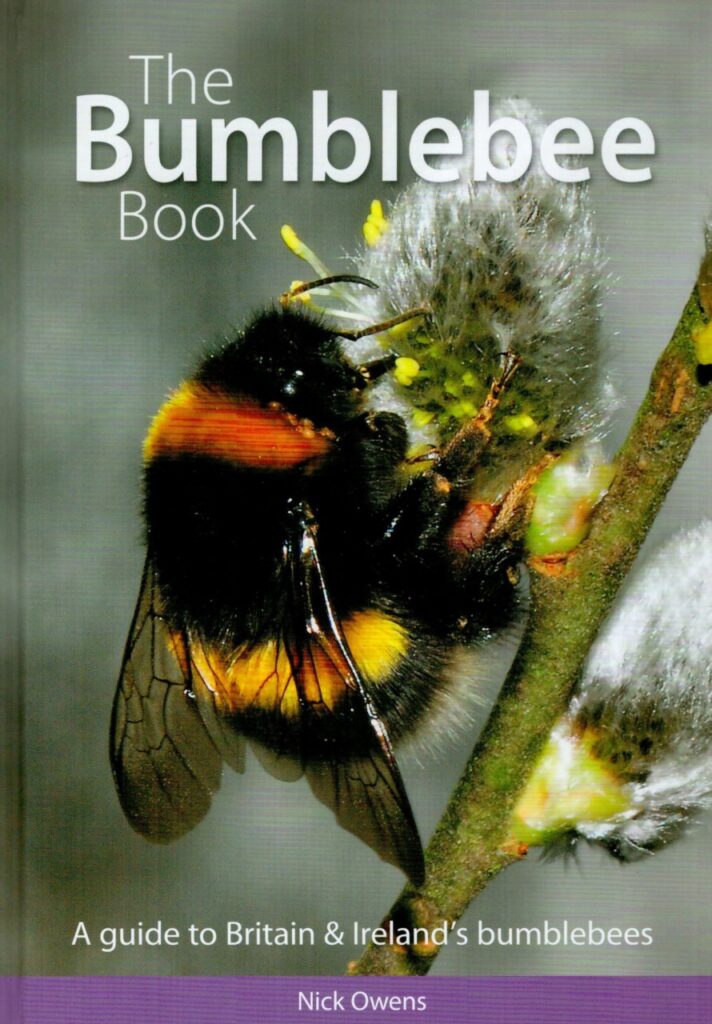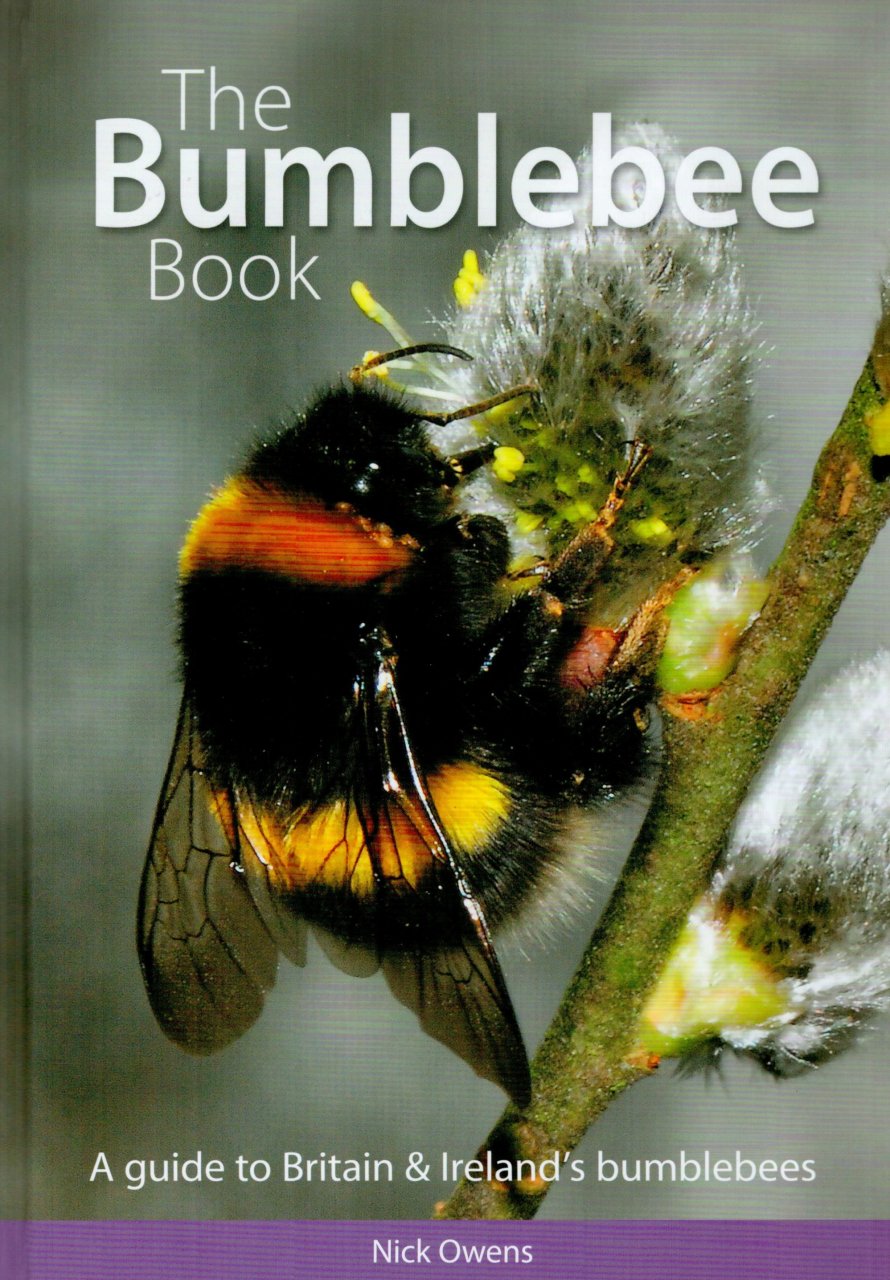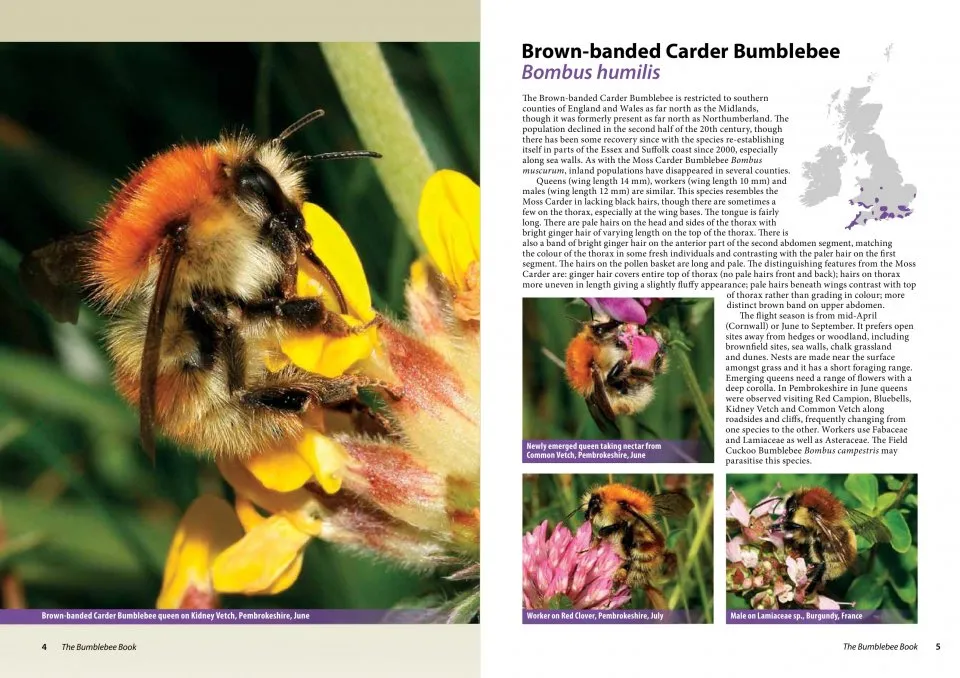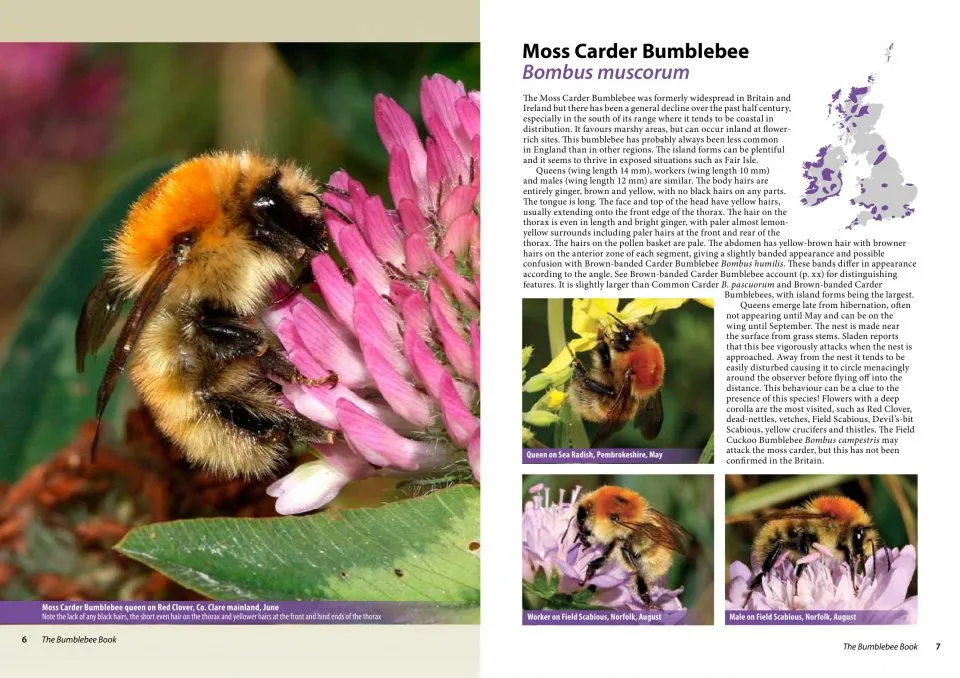This is the latest book to enter the now relatively crowded marketplace of bumblebee guides, which may leave one wondering what it can offer to the more seasoned hymenopterist – read on! The author’s intention is to provide a book at the ‘entry level’ of bee study, Owens stating from the outset that he ‘aims to provide an easily accessible introduction for those with little or no previous knowledge of bumblebees’. There is, however, also a good deal of additional information that will be of interest to those with more experience. With this target audience in mind, it is perhaps most important to highlight what the book does not contain, such as in-depth identification charts, dichotomous keys and drawings of genitalia. Recognising that this information is available elsewhere in several other books, the author sticks to providing more gentle identification hints and observations throughout the text so that the curious reader can learn what to look out for as his/her hobby develops. Equally, the level of anatomical jargon is kept to a minimum so as not to daunt the beginner, but a short section names the key features of a bumblebee’s body. This will limit the use of the book to anyone simply wanting to name a specimen at hand, but, armed with additional identification resources, this guide provides a wealth of background information served up in a very digestible style.
View this book on the NHBS website
While the bulk of the book is rightly taken up with species accounts, there is a good deal of additional information on bumblebee ecology, including a lot of material from the author’s own observations. This includes a summary of bumblebee life cycles, with some interesting information on the role of scent-marking in males as a possible means of attracting queens. There is also discussion of possible impacts of climate change on bumblebee behaviour, such as the increase in activity during winter. In support of this, a table starkly illustrates the shifting calendar of flight periods of queens in southern Britain between 1912 and 2015. Within the account of the Great Yellow Bumblebee Bombus distinguendus is a table of foraging data for queens of several bumblebee species in the Outer Hebrides, illustrating that particular species’ dependence on various clovers and vetches.
The species accounts come with maps that illustrate, with a reasonable degree of accuracy, the current distribution as is presently known. There are descriptions of males, queens and workers of each species, copiously illustrated by the author’s own photographs and supplemented by the work of others. While acknowledging the difficulties in separating the three members of the Bombus lucorum aggregate, there are some useful line drawings and accompanying photographs that show the ‘classic’ yellow-hair collars possessed by queens of each of the species involved. Of greater interest to more seasoned bumblebee-watchers are the photographs and descriptions of some of the colour variants, such as those found in the Scottish islands. Hence, there are photos of the Hebridean and Shetland subspecies of the Heath Bumblebee B. jonellus and also coverage of four subspecies of the Moss Carder-bee B. muscorum.
Following the individual accounts, over 40 pages are devoted to discussing the relationship between bumblebees and flowers, covering flower shape, foraging behaviour, the way in which mutual evolution has moulded the form of flowers and bee-tongues, and the act of nectar-robbing by some species as a way of ‘cheating the system’. The merits of various plant families are discussed, and an appendix table provides suggestions for bumblebee-friendly plants to have in your garden. The six cuckoo-bumblebees are given a chapter of their own, an unfortunate consequence of which is that their alternative life cycle is mentioned some 140 pages after the social species’ life cycle is discussed. There follows, however, an interesting section describing colour mimicry, pheromone mimicry and other chemical ploys that allow a queen cuckoo to gain safe entry into a nest of its intended host. The book closes with a round-up of bumblebee biology, including colour patterns, predation by other animals, parasites, and insects that mimic bumblebees. A short chapter on the conservation of bumblebees includes a useful table comparing the declines in species across Britain.
The author is an accomplished photographer and the book is abundantly illustrated by the photos taken by him and by others – almost to the point of excess. The whole-page photos that introduce each species profile are magnificent in their detail, whereas, for example, the 12-picture double-page spread of the common Red-tailed Bumblebee seems a little overcrowded and might have been better served by fewer, larger and hence clearer photographs. The printing process appears to have ’over-cooked’ the colours on some plates, although this does not detract. The book is inevitably a blend of old and new: much of the basic species information will be old news to more seasoned students of bumblebees, but there is sufficient augmentation by the author’s own observations and thoughts to provide something for everyone in a very readable format.





